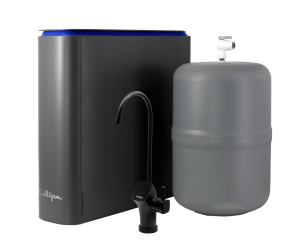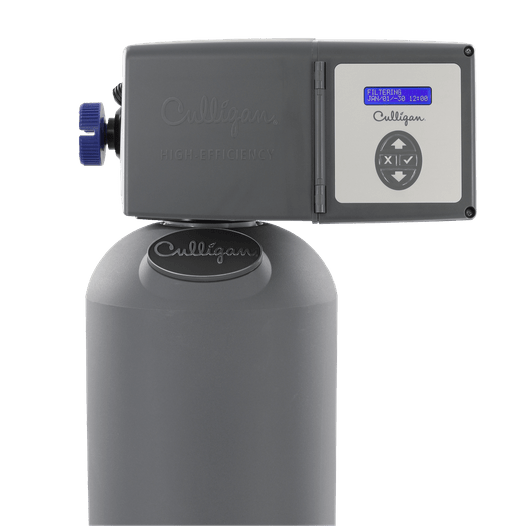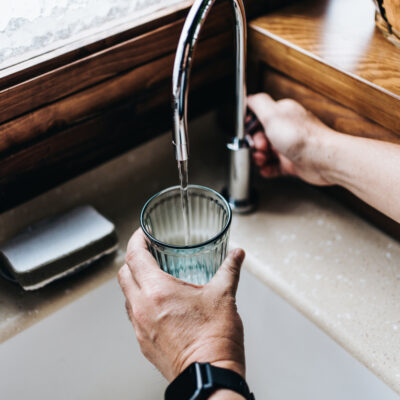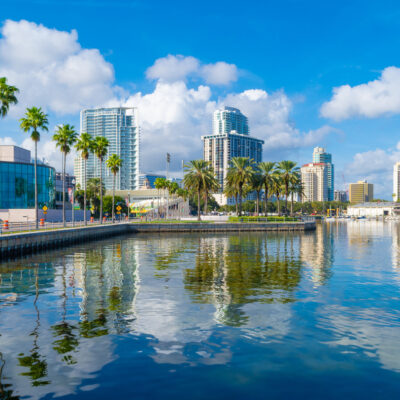Does Clearwater, Largo, Port Richey or St. Petersburg Tap Water Have pH Problems?
Understanding the pH of your tap water in Florida is a vital step in safeguarding your health, enhancing your water quality, and prolonging the life of your plumbing systems and appliances. The pH level can significantly affect the taste of your water and the ability for your body to absorb essential nutrients. By regularly testing your tap water, you can ensure a perfectly balanced pH, which is key for promoting your well-being and successfully maintaining your home.
Measuring the pH of Water in Clearwater, Largo, Port Richey, and St. Petersburg
Acidic water can be a problem within your home, causing metallic and sour taste, stained laundry or blue/green stains in your sinks and other fixtures. Furthermore, acid water could be a sign of other major household water issues.
Ideally, water should have a neutral pH of around 7. However, water classified as acidic has a pH below 7, while alkaline water has a pH above 7. The Environmental Protection Agency (EPA) considers a pH range of 6.5 to 8.5 as acceptable for drinking water supplies.
What is the pH of Water in Clearwater?
The City of Clearwater’s most recent Water Quality Report confirms that drinking water pH typically stays within a safe and acceptable range, though it doesn’t list a specific average. The city primarily draws its water from groundwater wells, which naturally carry a slightly alkaline pH because of the surrounding limestone geology.
What is the pH of Water in Largo?
Largo’s water supply blends groundwater with surface water. According to their 2022 Water Quality Report, the water typically maintains a stable pH within the state-recommended range for drinking water safety. Although the report doesn’t specify the exact pH average, utility managers treat the water to keep it slightly alkaline, helping prevent pipe corrosion and preserve water quality throughout the distribution system.
What is the pH of Water in Port Richey?
In Port Richey, the municipal water is sourced from local groundwater wells and treated before distribution. The city’s water quality report doesn’t list a precise pH number. The slightly alkaline nature of the water helps protect plumbing and maintain a clean, consistent taste.
What is the pH of Water in St. Petersburg?
According to the City of St. Petersburg’s latest Water Quality Report, the pH of the drinking water is carefully controlled to remain between 7.0 and 8.5. This slightly alkaline range ensures the water is non-corrosive and safe for household use. The city blends groundwater and treated surface water and adjusts the pH during treatment.
Surface water typically has a pH value of 6.5 to 8.5 (7 represents neutral on a scale measured from 0 to 14). Acid water is classified as water with a pH value lower than 7. For example, household liquids considered naturally acidic are coffee and vinegar. Household items with a pH above 7 include baking soda and soap. These are considered alkaline.

The EPA recommends that public water systems keep a pH level of 6.5 to 8.5, but these levels arenot regulated in any way. Low pH water is considered a “secondary” water contaminant, but the effects of acid water go beyond taste. It can hit you hard in the wallet, as well.
Does Clearwater, Largo, Port Richey, and St. Petersburg Have Acidic Water?
Water quality reports and Environmental Working Group (EWG) data show that areas in Clearwater, Largo, Port Richey, and St. Petersburg don’t typically experience acidic tap water. However, there may be instances where corroded pipes or outdated household plumbing systems introduce localized acidity or metal leaching, especially in older homes.
Signs of Acidic Water
- Blue/green stain in your sinks, tubs and other bathroom/kitchen fixtures
- Rust stains (if you have iron pipes)
- Low water pressure could be a sign of pipe corrosion
- Metal corrosion can also cause your water to have a sour or metallic taste to it
- Your hot water heaters, washing machines or dish washers are not functioning correctly
- Acidic water, much like mineral-rich hard water, can be tough on your hair and skin
Sources of Acid in Tap Water
Groundwater is different than surface water, as it tends to have a lower than average pH than surface water. Water’s pH can change with the variants of rock formations. Limestone works as an acid neutralizer, while granite does not.
In areas where there are lakes or rivers, plants die and decompose, releasing carbon dioxide and forming carbonic acid.
Vehicles and factories in densely populated or industrial areas release nitrogen oxide and sulfur dioxide into the air, which then form acid rain. Electrical power generation from coal power plants is one of the largest contributors to acid rain.
Impact of Acidic Water on Household Plumbing and Appliances
- Pipe Corrosion: Acidic water can corrode metal pipes, potentially leaching harmful metals like lead, copper, or iron into the water.
- Staining: Blue or green stains may appear in sinks, tubs, or toilets due to the reaction of acidic water with copper pipes.
- Reduced Lifespan of Appliances: Water heaters, washing machines, and dishwashers may experience internal corrosion, leading to breakdowns.
Effects on Water Taste and Quality from Acidic Water
- Sour or Metallic Taste: Acidic water often has an unpleasant taste due to corrosion from pipes and contaminants in the water.
- Increased Contaminant Levels: Corrosion from pipes can introduce harmful contaminants into the water, which can have adverse health effects, especially for sensitive individuals like pregnant women or children.
Solutions
Suggested Products

The Aquasential® Smart Reverse Osmosis Water Filter (RO)
- 7 stages of filtration and 12 filter options
- Certified for reduction of 58 contaminants
- 2-in-1 sediment and carbon filter screens out sediment and particles
- Can alert you and your dealer when service or filter replacements are needed

Aquasential™ Smart High Efficiency Whole House Water Filters
Reduce sediments in your water and contaminants that cause your water to appear, taste, and smell unpleasant. Your system can also lessen the taste and odor of chlorine, and prevent pipe damage and staining from low pH water. Additional customizations include:
- Culligan® Filtr-Cleer® Water Filters – Reduces Sediment Problems
- Culligan® Cullar® Water Filters – Reduces Taste and Odor Problems
- Culligan® Cullneu Water Filters – Reduces Acid Problems
Does Clearwater, Largo, Port Richey, and St. Petersburg Have Alkaline Water?
Many homes in the areas of Clearwater, Largo, Port Richey and St. Petersburg has tap water that pours slightly alkaline. This is due to the treatment process that water providers conduct. The benefits of water with a level above a pH of 7 are well-documented though not proven
In fact, alkaline water can contribute to scale buildup in your household plumbing and bitter tasting coffee. Marketers have promoted this kind of water to consumers for years, but the claim that it offers health benefits lacks scientific evidence and falls into the realm of pseudoscience.
Are There Benefits to Alkaline Water?
You’ve probably heard the hype about alkaline water benefits. Is there a correlation between alkaline water and good health? It seems like every other year there’s a new trend in water.
By nature, regular tap water has a neutral pH. You might remember testing different liquids in chemistry class by dipping a strip in them to determine their pH — you can get those same strips at a hardware store to test your water to see what kind of balance your tap water has, but chances are it will fall around 7, which is neutral.
Myths that involve alkaline water include:
- Health benefits mixed with lemon
- Anti-aging claims
- Illness prevention
Solutions to pH Problems in Your Tap Water
If you suspect that your tap water has a low or high pH, there are several solutions to address the issue:
- Reverse Osmosis Filtration Systems: Reverse osmosis systems can effectively reduce acidity and improve water quality. These systems work well for both acidic and alkaline water. You can learn more about other Culligan filtration systems here.
- Water Testing: Give us a call! Our free water analysis can determine the pH levels of your tap water. These tests are also able to identify water contaminants which could be harmless, but could also potentially exceed health guidelines or legal limits.
Is Culligan Filtered Water Alkaline?
Culligan water is no more or less alkaline than your typical bottled water you’ll find in stores.
Our bodies are designed to function effectively with plain, neutral pH water. They’re designed to find their own balance, and while many health trends come and go, the biggest takeaway is that simple hydration is the key. The more water you drink (to a point) the healthier you’ll be, whether that water is slightly more alkaline, or slightly more acidic.
Want to experience all the benefits of alkaline water? You’ll likely be just as well off saving your money and drinking fresh, filtered tap water. As long as the water you’re drinking is free from harmful contaminants, you’ll benefit from getting your daily recommended ounces (the rule of thumb is at least 64 ounces per day, or eight, 8-ounce glasses) of water.




Facebook